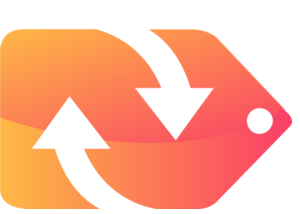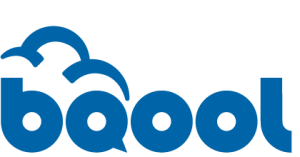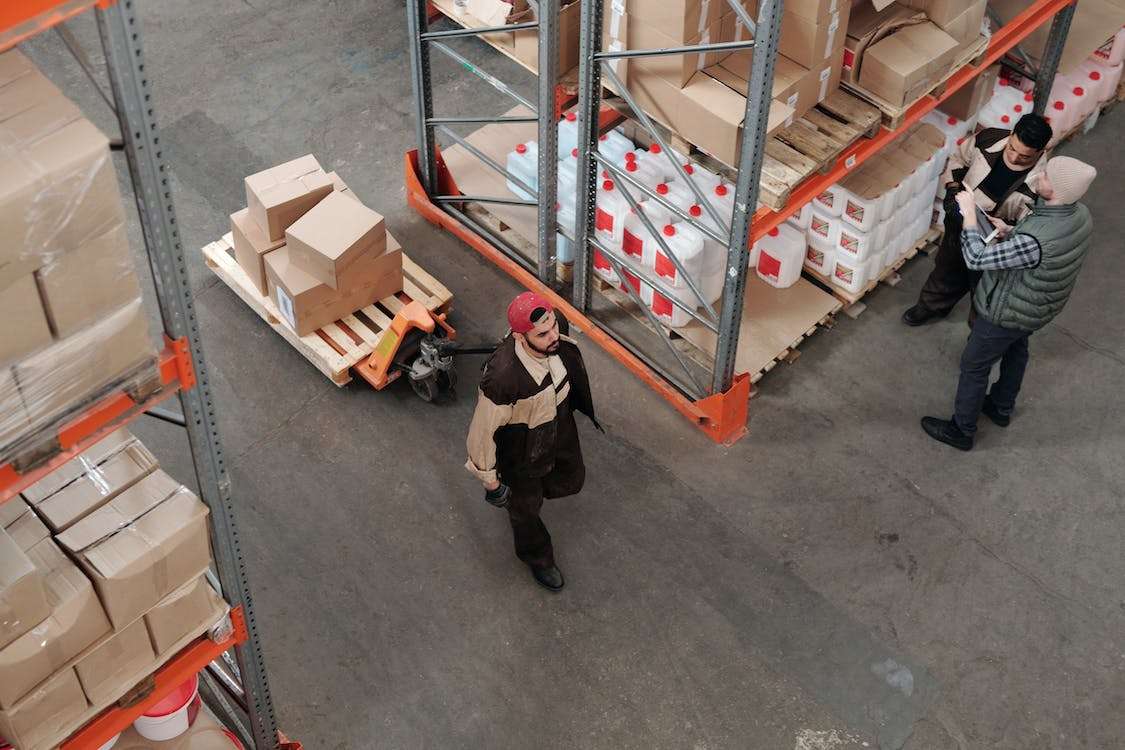In the world of e-commerce, success as an Amazon seller can often come down to pricing strategy.
Setting the right prices for your products not only ensures that you make a profit, but also helps attract potential buyers and compete with other sellers. But how do you determine the best pricing strategy for maximizing profit?
- One approach is to closely monitor the prices of similar products offered by competitors.
- This allows you to stay competitive while still making a profit.
- Another option is to regularly adjust your prices based on changes in demand or supply. We’ll cover more on this below.
No matter which strategy you choose, make sure to continually review and adjust your prices in order to maximize profit and maintain a successful business on Amazon. Let’s dive into the details!
Use this outline to skip to any section of this page:
- Research category price range
- Determine profit margins
- Minimize cost-of-goods-sold
- Test different prices
- Explore bundling and kitting options
- Understand buy box dynamics
- Use discounts and coupons
Research category price range
The first step in determining the price range for a product is to research similar items already being sold on Amazon. Look at the prices, customer reviews, and seller ratings to get an idea of what consumers are willing to pay for this type of product.
A few more tips:
- Consider the cost of producing and shipping the product, as well as any fees associated with selling on Amazon.
- Comparing these costs to competitor prices can help determine a competitive, yet profitable price range for the product.
- Look at pricing for the item on other online marketplaces and brick and mortar stores.
This can provide valuable insights into overall industry trends and pricing strategies.
Overall, taking the time to thoroughly research category price ranges can benefit an Amazon seller in the long run by helping them make informed decisions about setting profitable prices for their products.
Set a minimum and maximum price
This ensures that you are not selling your items at a loss and helps to maintain profitability. Additionally, setting a minimum price can also convey the value of your products to potential customers.
On the other hand, setting a maximum price can prevent you from pricing your products too high and potentially losing out on sales. It can also help you stay competitive with other sellers offering similar products.
Adjusting your Min and Max prices manually can be quite time-consuming, taking your focus away from other key areas of your business. It’s best to automate this process with an Amazon Repricer. This allows you to optimize your products’ pricing to ensure they are competitive, increasing the chances of winning the Buy Box and therefore increasing overall sales and profits.
There are two Amazon Repricers that we highly recommend:


Overall, having a well thought out pricing strategy can help increase profits and improve customer perception of your products on Amazon.
Factor in your product’s quality
In evaluating the quality of our product compared to competitors, we must consider several factors:
- What is the overall effectiveness and functionality of our product? Does it solve the problem it was designed to address in a reliable and efficient manner?
- What is the durability and longevity of our product? Will it need to be replaced frequently, or will it withstand long-term use?
- What is the aesthetic appeal of our product? Is it visually pleasing and well-designed, or does it have a cheap or outdated appearance?
Taking all of these factors into account can help us determine where our product stands in terms of quality compared to competitors. If our product excels in these areas and offers superior performance and aesthetics, we may be able to justify a higher price point.
- On the other hand, if there are areas where our product falls short in comparison to competitors, we may need to adjust our pricing accordingly.
- It can be helpful to gather feedback from customers and conduct market research on competitor pricing strategies.
- This information can provide valuable insight into how consumers perceive the quality of our product and how we should position it in terms of pricing.
Ultimately, focusing on consistently improving the quality of our offering can help us attract and retain customers in the long run.

Determine profit margins for your Amazon pricing strategy
In order to set the appropriate price for a product, it is important to understand its profit margins. This information can assist in determining how much profit can be generated from each sale and if any discounts or promotions need to be offered.
One way to calculate profit margins is by subtracting the cost of goods sold from the selling price, then dividing that number by the selling price. This will provide a percentage that represents the profit made on each sale.
For example, if a product has a selling price of $10 and a cost of goods sold of $5, the profit margin would be 50%.
Knowing this information can also help with making decisions about production costs and expenses:
- If a company has a low profit margin, they may need to consider reducing expenses or finding ways to lower production costs in order to increase profits.
- On the other hand, a high profit margin may allow for more flexibility in pricing and the ability to offer discounts or promotions without significantly impacting profits.
- Understanding profit margins can be an important factor in effectively setting prices for products and maximizing profits for a business.
Minimize cost-of-goods-sold to determine your pricing
Use an FBA prep center
One benefit of using an FBA prep center is that they often offer bulk pricing discounts for preparing and packaging your products. This can save you a significant amount of money compared to doing all the prep work yourself or hiring individual employees to do it for you.
Another advantage is that FBA prep centers have the necessary equipment and experience.
They’re able to efficiently and accurately prepare your products for fulfillment, reducing the likelihood of any mistakes or errors that could lead to additional costs or customer dissatisfaction.
Using an FBA prep center can also save you time and hassle, as they handle all the tasks related to product preparation so that you can focus on other aspects of running and growing your business. Overall, utilizing an FBA prep center can be a wise decision for both cost savings and convenience.
Negotiate with suppliers
In order to negotiate with a supplier for a lower cost of goods, you should first gather information about market prices for similar products and present it to the supplier.
- Provide examples of similar suppliers who are offering lower prices.
- Communicate the impact that a lower cost of goods would have on your business.
- For example, it would allow you to offer more competitive prices and potentially increase sales.
- Emphasize the potential for a long-term partnership and continued business with the supplier if they are willing to negotiate a lower cost.
- Read more on Amazon FBA Sourcing: Best Strategies to Negotiate with Alibaba Suppliers.
During the negotiation process, it’s important to be firm yet flexible and open to compromise.
For example, perhaps the supplier is unable to lower the overall cost but can offer a bulk discount or additional perks such as faster shipping. Overall, clear communication and strong negotiation skills can help secure a better deal with a supplier and improve your profits as an Amazon seller.
Decrease FBA and storage costs
One way to lower storage costs is to carefully evaluate the inventory you keep in your warehouse.
- Are there any slow-moving or obsolete products that can be removed from your inventory?
- Can you negotiate better rates with your warehouse provider?
- Do you need a storage, prep and distribution partner to consult with?
Another strategy is to optimize how you use Amazon’s Fulfillment by Amazon (FBA) program. Review the fees for each product and consider whether it would be cost effective to store and fulfill the item yourself, or use FBA.

In some cases, using FBA for certain products and fulfilling others yourself can lead to lower overall costs. Additionally, properly packaging and labeling items can help minimize potential damages and associated fees.
Overall, by regularly reviewing and adjusting your storage and fulfillment strategies, you can effectively lower your cost of goods sold as an Amazon FBA seller. We cover more strategies in that link as well.
Test different prices
As an Amazon seller, it is important to test different prices in order to find the most profitable option for our products.
This can be done by setting a base price and then testing small variations in price to see how it affects sales and overall profitability.
For example, if we have a product that is currently selling at $10, we could test raising the price to $11 or lowering it to $9 to see if either of those changes result in a higher profit margin.
- This type of testing can also be applied to discounts and promotions.
- Offering a certain percentage off or including a bundle deal may lead to an increase in sales and ultimately higher profits.
- Continuously testing and adjusting prices based on results can help optimize our profits as an Amazon seller.
It is important to keep track of sales and profits for each price variation – in order to make informed decisions about which option will be most successful in the long run. Testing different prices can also help us stay competitive in the marketplace and attract more potential buyers.
Explore bundling and kitting options in your pricing strategy
One way to incorporate bundling and kitting into your pricing strategy is by offering bundles of multiple related products at a discounted price.
- For example, if you sell beauty products, you could offer a bundle of shampoo, conditioner.
- Then, leave-in treatment for a discounted price compared to purchasing each item separately.
- This not only allows you to attract customers looking for convenience and a deal, but also helps clear excess inventory of multiple products at once.
Another way to utilize bundling and kitting in pricing is by offering kits that include all the necessary components for an activity or project. For instance, if you sell arts and crafts supplies, you could create kits with all the materials needed for specific projects such as making a scrapbook or painting a canvas.
This can be appealing to customers who want an easy way to get started on a new hobby without having to search for each individual item.
In both cases, bundling and kitting can help drive sales and increase profits while also providing value to customers.
It’s vital to consider how different bundle or kit options will impact your overall profitability when determining which options to offer.
Understand Amazon buy box dynamics to help determine how to set your prices
How it works
If you’re selling private label, this section likely won’t apply to you. But if you’re selling wholesale or arbitrage, read on.
In order to have a successful pricing strategy as an Amazon seller, you need to understand how the buy box works.
- The buy box is the section on a product page where customers can add the item to their cart and make a purchase.
- A major factor in determining who wins the buy box is price.
- Sellers must stay competitive with their pricing in order to increase their chances of winning the buy box.
Keep in mind – Amazon favors sellers with a proven track record of good customer service, timely shipping, and low return rates.
In addition to considering price and performance metrics, sellers should also keep an eye on their competition. Staying aware of competitor prices and adjusting accordingly can help improve a seller’s chances of winning the buy box and ultimately drive more sales.
Overall, having a strong understanding of how the buy box works and taking steps to optimize for it can greatly impact a seller’s success on Amazon.

How to win the buy box
One of the best ways to increase your chances of winning the Amazon buy box involves:
1) Maintaining a high seller rating
This means consistently providing excellent customer service and prompt, accurate fulfillment of orders. Your seller feedback should be mostly positive, with a low percentage of negative or neutral ratings. In this article, we talk more about high seller ratings to win the buy box too..
2) Offering competitive pricing on your products
Regularly checking and adjusting your prices to stay in line with other sellers can help attract customers to purchase from you instead of competitors. It’s also important to have a sufficient quantity of inventory available to meet potential demand.
3) Taking advantage of programs like Fulfillment by Amazon (FBA) can give you an edge over non-FBA sellers
Using FBA allows for quicker shipping times and offers benefits such as Prime eligibility, which can attract more buyers. Amazon might also give you an algorithm boost, just by selling with Prime as well.
Overall, a combination of strong seller rating, competitive pricing, and utilizing programs like FBA can greatly increase your chances of winning the Amazon buy box.
Use discounts and coupons
Once you’ve determined your target audience and understand their purchasing habits, you’re in a better position to know which discounts, coupons, and promotions to run.
- One approach could be to offer a discount on a popular or new product to attract customers and boost sales.
- Coupons can also be used as an incentive for repeat purchases or to encourage customers to buy multiple items at once.
- Holding promotions such as flash sales or offering special deals for subscribers can drive traffic to your store and increase conversions.
As always – you should monitor the effectiveness of these tactics and adjust accordingly.
For example, if a certain coupon code is not being redeemed frequently, it may be worth changing the offer or discontinuing it altogether.
Overall, utilizing discounts, coupons, and promotions can help boost sales and keep your products competitively priced on Amazon’s marketplace.

